The Monday before Watches & Wonders is the perfect storm of reasons things get overlooked. It was a pretty exceptional Monday, to be fair. I experienced a steel Patek 1518 for the first time, wore the Vacheron Constantin Solaria (the most complicated wristwatch in the world), and covered F.P.Journe's new releases, including the Chronométre Furtif. At the tail end of my Journe appointment, their press person told me he had something special, something so unique and precious he was only showing it to a select few. And I couldn't put it on my wrist.
Then, a few hours later, Rolex launched the Land-Dweller, all hell broke loose, a crush of releases came, and I couldn't find time to cover that watch. Well, the time is now. The reason? Well, the reason is that it exists—spectacularly so—in a singular and remarkable form. Sometimes, that's enough.
The F.P.Journe Tourbillon Souverain Joaillerie Rubis (ref. TVJ) may be one of the most outrageous things I've seen in person and I can't quite get over it. The ostentatious nature of gem-setting means that the craft of it doesn't get enough respect. But what Journe has done here goes beyond.
The use of diamonds, especially as dial indices, has a certain elegance. However, I know quite well that many think that trend (one with a rich historical background) is something firmly rooted in hype, too gauche to even consider interesting. The use of rubies has historical precedent as well, especially among the vaunted halls of Patek Philippe's archives, as I wrote about when I reviewed Rexhep Rexhepi's use of rubies on 10 examples of his Chronometre Contemporain II.
The Rexhep Rexhepi Chronomètre Contemporain II with ruby indices which I wrote about a year and a half ago.
The argument over the use of precious stones on the case sparks a whole different battle, one even harder to fight (or to resist trying to fight). The Patek ref. 5971 is an all-time favorite for me and others, like John Mayer; the last Lemania-based caliber from Patek Philippe, housed in a watch featuring a prominent diamond-set bezel, is something worth at least respecting. However, it's the rise in popularity of the "Rainbow," "Barbie," and other off-catalog Daytonas (the rubellite ref. 116589SALV is a personal favorite) that has undoubtedly contributed to the surge in gem-set cases and bezels from brands.
Even Patek has taken it to the extreme with the ref. 5260/1455R-001 Aquanaut Luce "Rainbow" Minute Repeater Haute Joaillerie with 779 baguette-cut multicolored sapphires (45.05 ct) and 130 baguette-cut diamonds (8.66 ct). Last year, that was the second most expensive production watch offered by Patek Philippe at just shy of $3 million. I'm not here to argue any further on the merits of gem-setting (at least not in this article), but I've spent time around collectors I respect—collectors of both modern and vintage watches—who have opened my eyes to the rarity and craft of gem-set watches. I find them fascinating enough that a future look at that craft is probably in order.
The Rolex Daytona ref. 126599TRU in white gold with pigeon ruby bezel, indices, and diamond-set lugs. Photo by Mark Kauzlarich.
The updated Patek Philippe ref. 5271/12P Joaillerie. Photo courtesy of Patek Philippe.
An Omega Speedmaster Professional in Canopus gold with ruby bezel and indices. Photo courtesy Hairspring.
The Patek Philippe ref. 5723/112R-001 in Singapore. Photo by Mark Kauzlarich.
Collector Davide Rovelli, owner of the full rainbow set of the 41mm Audemars Piguet Royal Oaks, wearing one set with rubies. Photo courtesy Davide Rovelli.
Even though Rolex launched a secret sapphire Daytona with an obsidian dial this year, judging by what's on the wrists of collectors (as seen above), it seems the rubies are still la gemme du jour. The F.P.Journe TVJR (as I'll call it), therefore, is maximalisme incarné. The watch features approximately 25 carats of rubies across 93 stones, the largest baguette-cut rubies ever used in the watchmaking industry, according to the brand. It took eight years (EIGHT) to source large enough color-matched oval stones to allow them to be recut into the baguettes for the case. With that in mind, there is only one example so far.
For context, the recent release of the Vacheron Constantin Métiers d'Art Tribute to the Celestial featured white gold cases and a total of 96 baguette-cut blue sapphires, weighing approximately 3.87 carats. The Patek Philippe ref. 5271/12P features 58 baguette-cut rubies weighing a total of 4.11 carats. That means that on average, the baguette on the ref. TVJ Rubis is more than 4.14 times larger than the baguettes on the Patek and 7.25 times larger than those on the Vacheron.
Milled platinum cases, seen on our recent tour, made for the Tourbillon Souverain, set with 22.5 carats of 93 baguette diamonds.
The obvious comparison would be pitting F.P.Journe against itself, with the original version of the ref. TVJ that featured diamonds. How many? Only (only, he says morosely) 22.5 carats across 93 baguettes of white diamonds in platinum cases. I saw one of these watches in Dubai almost two years ago, but wasn't able to find a "hook" for the story. Now we've found one with the ref. TVJ Rubis. Similar to the Rubis, I wasn't allowed to wear the watch, so it's challenging to provide context for the size, which has increased from the already-large-for-Journe 42mm by 13.6mm case of the ref. TV to 44mm by 13.76 mm for the ref. TVJ.
This is, nominally, a "Hands-On" and for any other watch from F.P.Journe, the movement would be the main focus. The Caliber 1519 is maybe the most unusual tourbillon ever created by Journe, who has shown mastery of the regulating organ. It includes a natural deadbeat seconds due to the constant force mechanism—remontoir d'egalité—providing a constant level of power to the escapement throughout the 80-hour power reserve. But any discussion of a watch with a tourbillon inevitably devolves into a back-and-forth over the fact that tourbillons are anachronisms designed initially (in part) to average out the effect of gravity on static objects (pocket watches, here). However, a wristwatch isn't static, so a tourbillon is unnecessary. But, then comes the retort: aren't all mechanical watches unnecessary? Congrats, you've just now reenacted this scene for the 100,000th time.
We've covered the Caliber 1519 before in depth, but the essence here is that the orientation of the tourbillon cage perpendicular to the baseplate puts the movement at an axis counter to how a wristwatch would usually sit when sitting working at a desk, on a nightstand, or in a watch box, and distributing the gravitational effects appropriately. The more important aspect here is that this vertically inclined tourbillon results in a watch that is significantly larger and thicker (13.76mm versus 9.9mm for the older Tourbillon Nouveau or ref. TN). The benefit is that you get a higher inertia of 11 mg/cm² (versus 10.1 mg/cm² in most Journe movements), which results in greater accuracy. It feels obligatory to mention that Journe has always contended that the only thing that could make his tourbillon movements more accurate is the removal of the tourbillon mechanism (à la Chronomètre Optimum). Still, most people want a tourbillon for its own sake, not for its accuracy.
The Remontoir d'Egalité seen at the rear of the movement, on the right.
Within F.P.Journe, there's precedent for much of the aesthetic design of the new TVJR. When the ref. TV was introduced, the brand also established a new design language with the main "dial" section (technically the red gold mainplate, which serves as the bulk of the dial) decorated in Clou de Paris guilloché, while the time-telling and deadbeat second dial was done with white enamel sub-dials. This is far from the first time that Journe used guilloché on the mainplate, which has been taken to the extreme with the F. P. Journe Tourbillon Souverain Regency.
This time, the rose gold mainplate "dial" has been first engraved, then treated with a black finish. Black-dialed Journes are among the rarest and most coveted examples from a brand that tends to produce limited editions of its already limited supply of watches. "Black label" watches are limited to two per reference per boutique per year—a sign of the brand's appreciation for its customers. Boutique editions of their watches typically feature black dials and rose gold accents.
The subdials here are done in what the brand calls "ruby heart," but is better known as rubellite, which has been hand-painted. Rubellite is a type of tourmaline, a group of crystalline silicates that I most frequently associate with several vintage and neo-vintage Rolex models. Journe has done this before as well, but in reverse, with the main plate of the Tourbillon Souverain Cœur de Rubis covered completely in the stone.
The Tourbillon Souverain Cœur de Rubis ref. TN with rubellite dial.
Rexhep Rexhepi Chronomètre Contemporain and F.P.Journe Chronomètre à Résonance Black Label seen at the Hourglass' IAMWATCH in Singapore. Photo by Mark Kauzlarich.
One of the 20 F.P. Journe Tokyo Edition Anniversary Tourbillon Souverain Ref. TT, also from IAMWATCH. Photo by Mark Kauzlarich.
Naturally, when you use the largest rubies ever used for a watch, all the other details seem to be secondary. Several factors differentiate the quality of work in this category (or that of Patek and Audemars Piguet, which both, at least on various occasions have relied on the Swiss company Salanitro for their gem sourcing and setting) from the average 47th Street "bust down" customization. First is the quality, color, and size of the stones. As previously mentioned, it took eight years to source enough matching and high-quality material to yield 25 carats of large baguette-cut rubies.
Just like good movement finishing, good setting should strike a balance between aesthetic beauty and fine finishing, highlighting the quality of the material. Rubies are naturally a bit trickier for the latter, as the deeper the color, the less light they transmit (the less brilliant they are). Journe has channel-set the rubies, but with a raised bezel and a longer, sloping curve to the large 44mm case, it provides more surface for light to enter the stones and refract out, giving a bit of brilliance. It's nowhere near as tricky as pavé setting, nor as brilliant, but it's the most practical for a bezel with large stones like this.
The 93 rubies quoted above do not account for the additional 18 rubies on the platinum deployant clasp. Finally, the Responsible Jewelry Council guarantees the traceability of the rubies.
The standard ref. TV (without gems) is a watch that leaves many Journe collectors divided. The normally 42mm by 13.6mm size of the standard ref. TV is a bit unwearable for some. Now 2mm wider and 0.16mm thicker, and with the heft of the platinum case and rubies, the "upgraded" ref. TVJ is a statement piece beyond the gems or material, but just due to its size alone.
For lack of more photos (all the pictures of the TVJR were taken in under 4 minutes), photos of the TVJ with diamonds will serve as a nice substitute. On that model, you can see that the diamonds are particularly clear and pick up quite a bit of light through the channels in the case band. Unlike the rubies (which didn't provide color or clarity information), the diamonds used on the original TVJ are graded VVS and F/G, meaning "very very slightly" occluded (just shy of the highest rankings on clarity) and either colorless or near colorless (where ranking starts alphabetically at D).
Above, I compared the carat weight of a few other ruby-set watches that are currently available on the market. The Rolex Daytona was an off-catalog release, rumored to have been limited to 20 pieces, with a rumored MSRP of $490,000. One example is currently available on the market with an asking price of $1.1 million. When the updated red-dialed Patek Philippe ref. 5271/12P was released in 2022. It retailed for $348,930, and it is now being offered on the secondary market for around $525,000. The recent Vacheron releases, though they are sapphires and only set on the bezel and lugs, retail at around $280,000. And finally, the F.P.Journe Tourbillon Souverain Joaillerie Diamonds ref. TVJ is offered only on application for $776,500.
F.P.Journe did not share the price of the new Tourbillon Souverain Joaillerie, unsurprisingly, as watches at this level are often "price on request." However, out of curiosity, I asked several collectors who might have been in a position to receive the price themselves. While none of them had received a concrete price, all of the numbers I heard from these collectors exceeded $2 million. It's also unclear whether the watch has been sold; those same sources told me they have heard that—no matter the asking price—multiple potential buyers were waiting for this watch or the next. But if history is any guide, it just may take another eight years or so for the brand to source enough gems to make one again.
For more on the F.P. Journe Tourbillon Souverain Vertical Joaillerie Rubis, visit the brand's website.
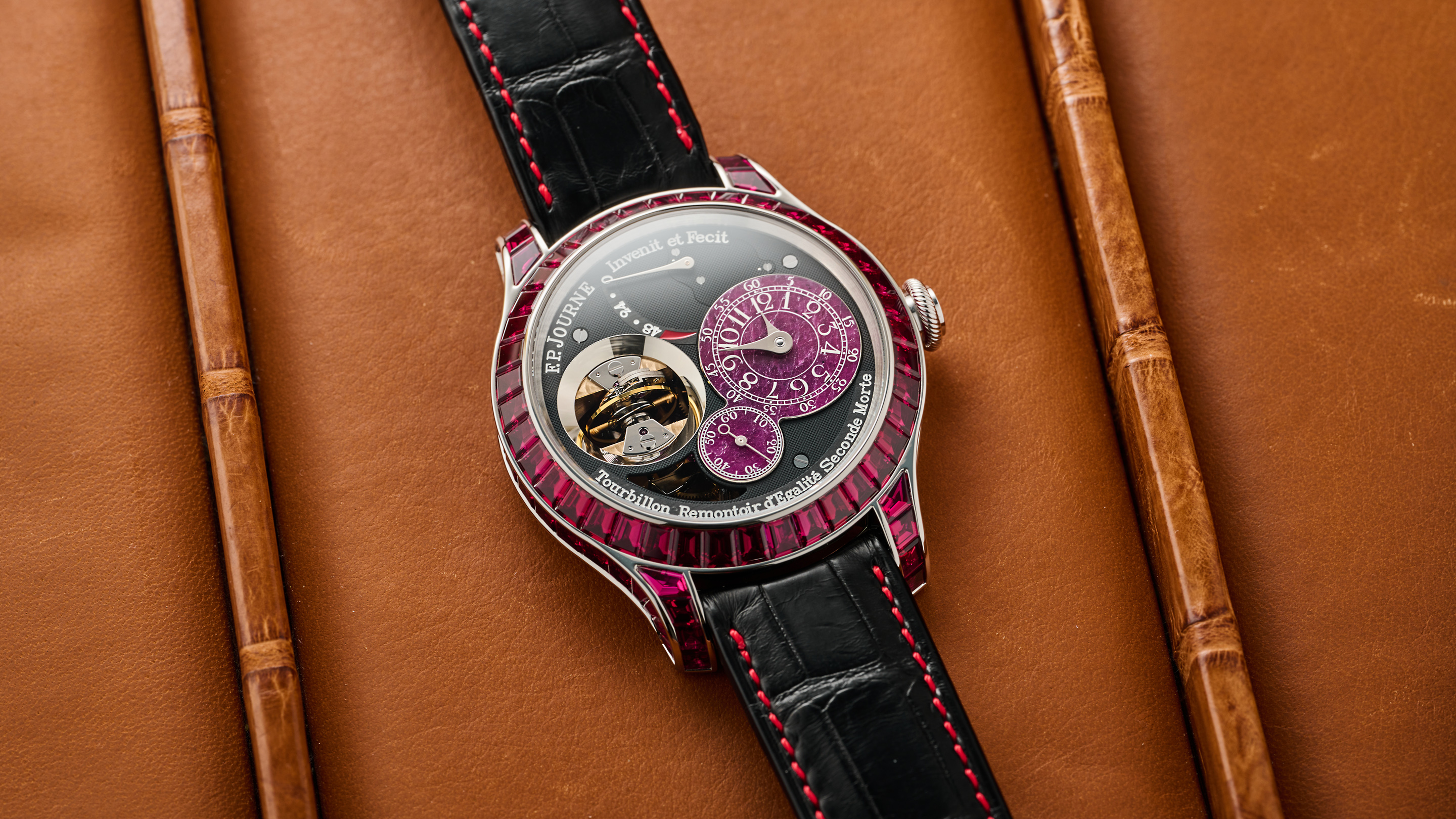





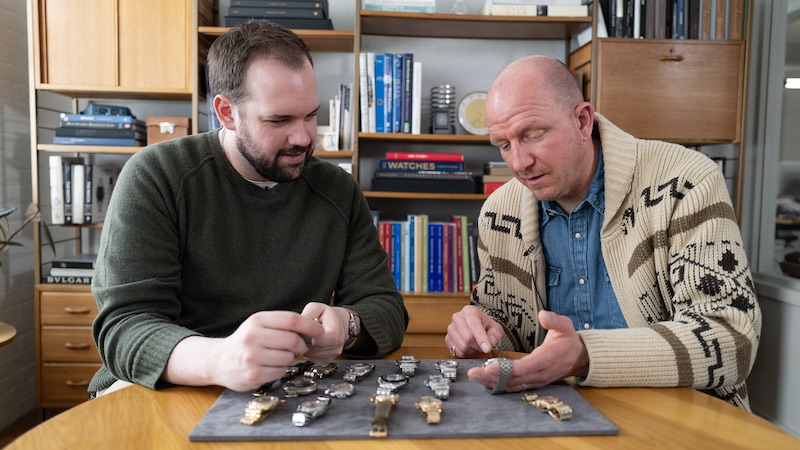




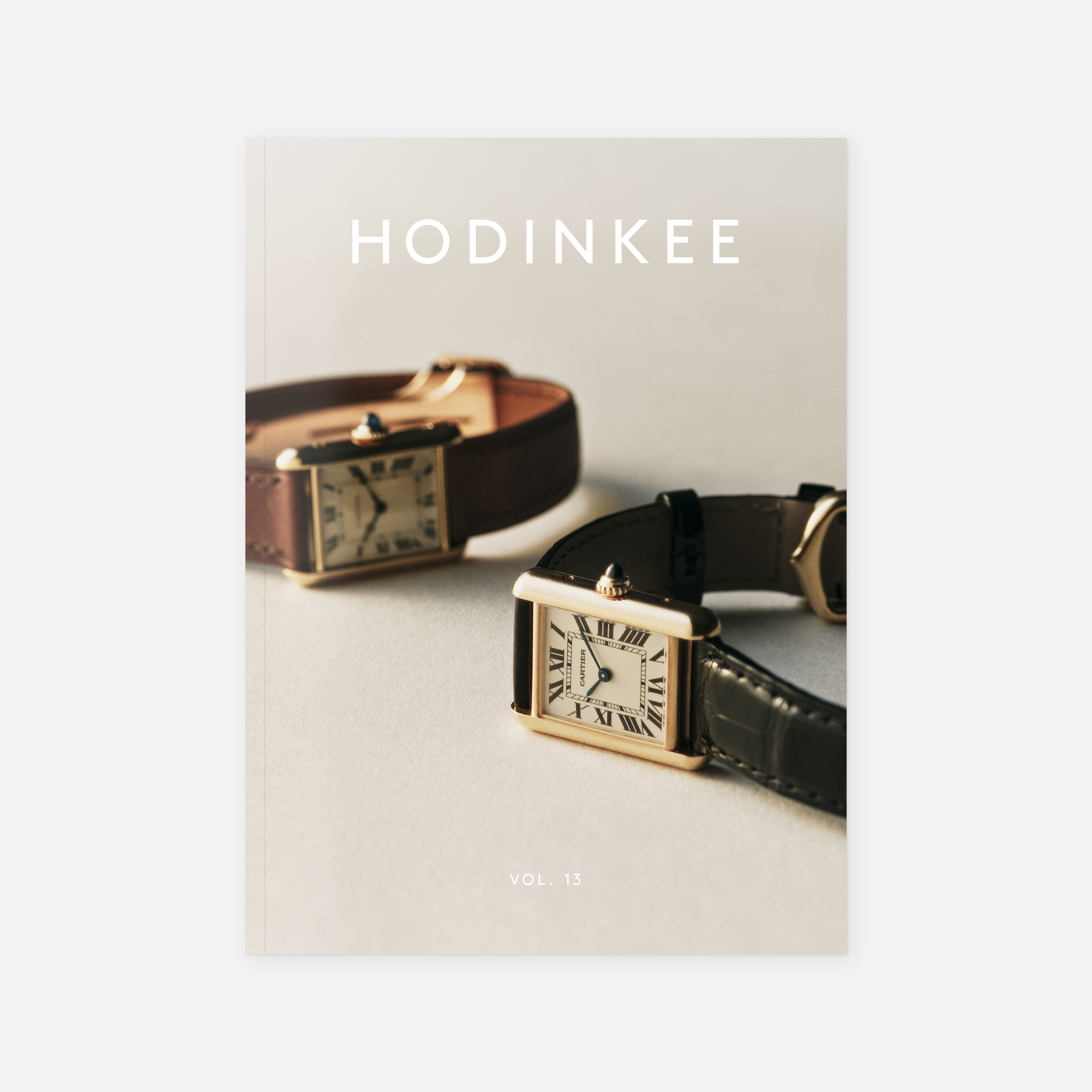
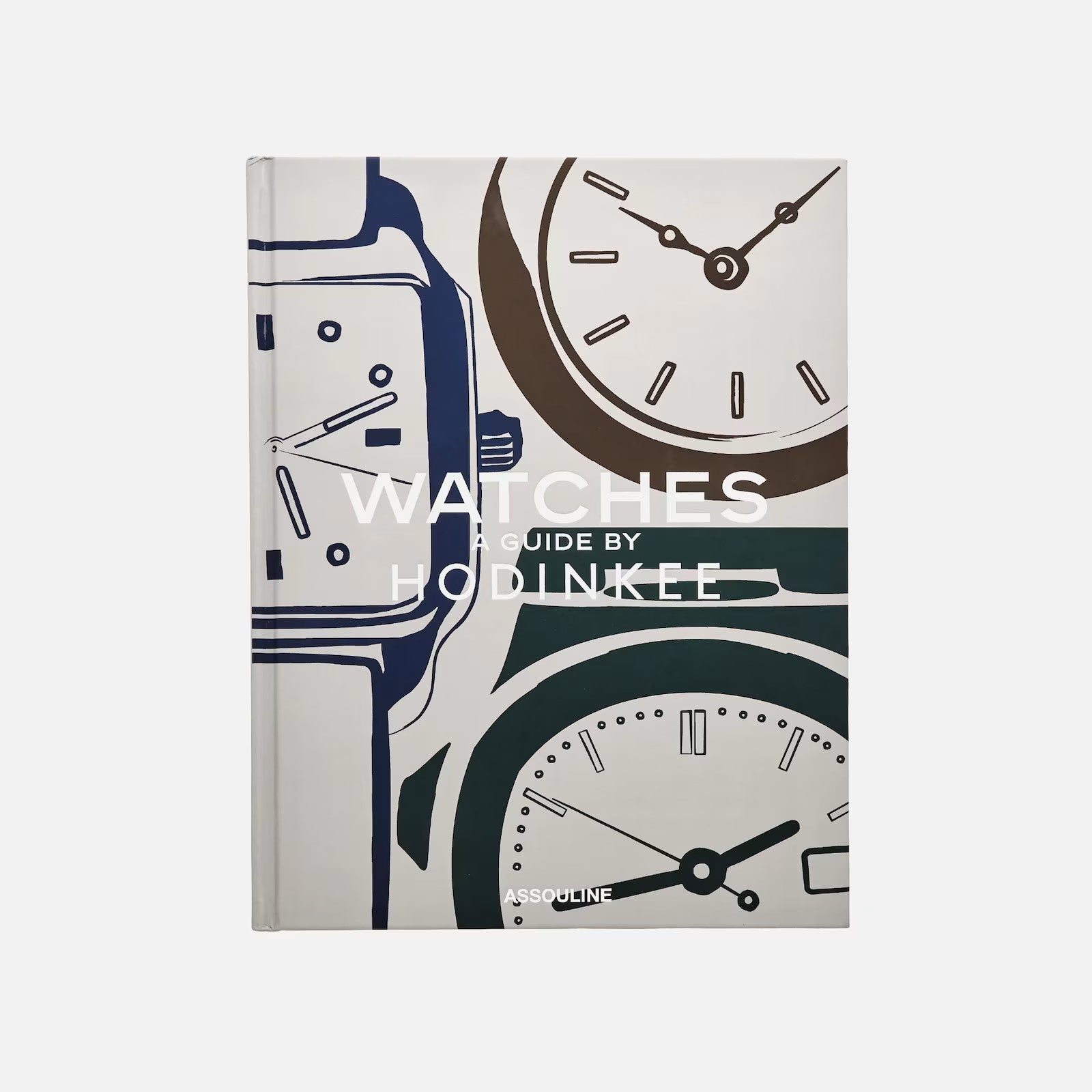
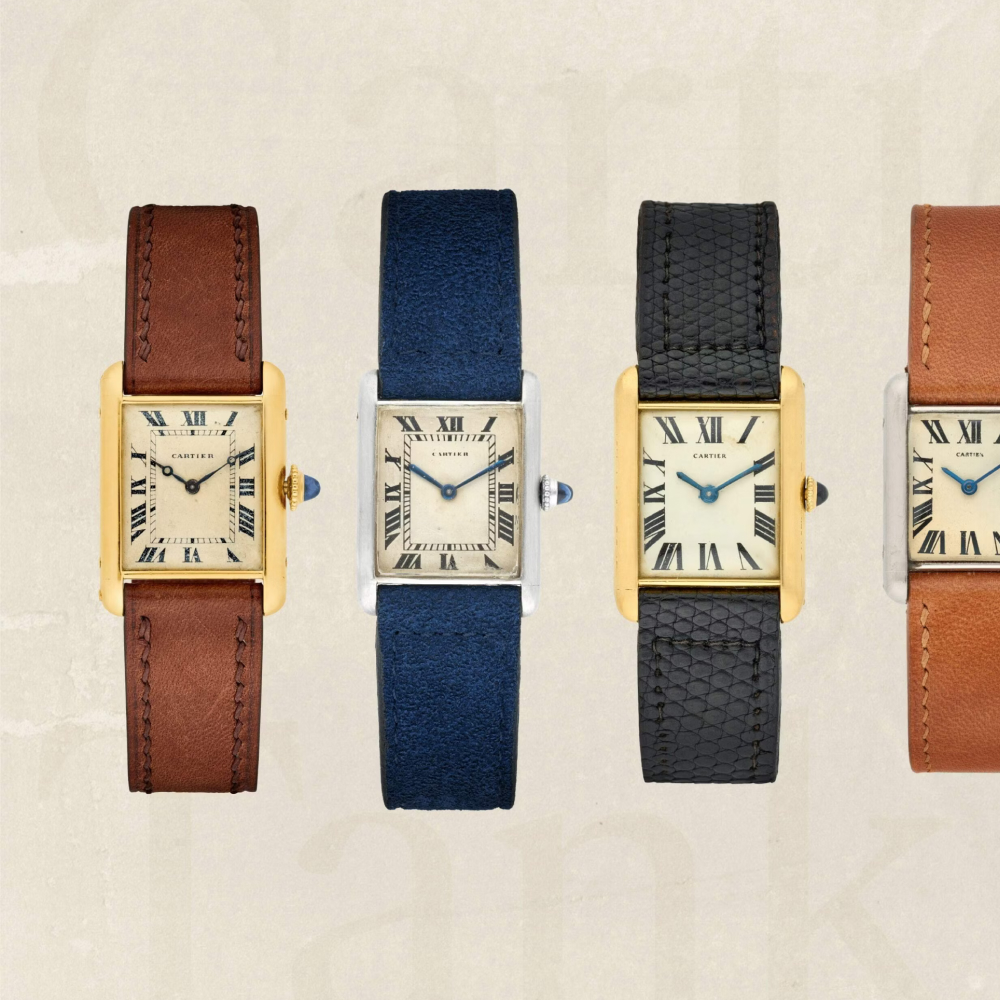




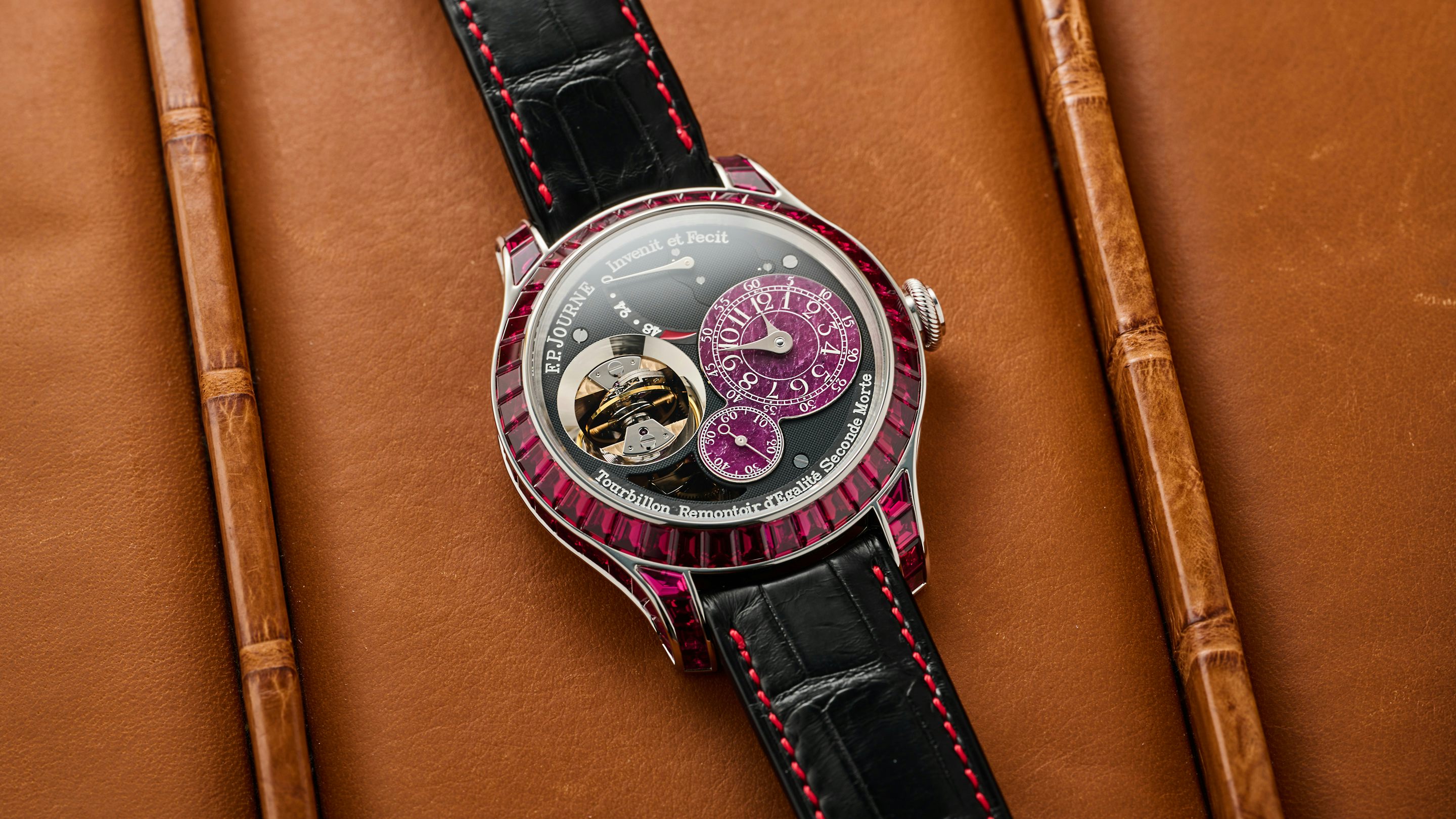



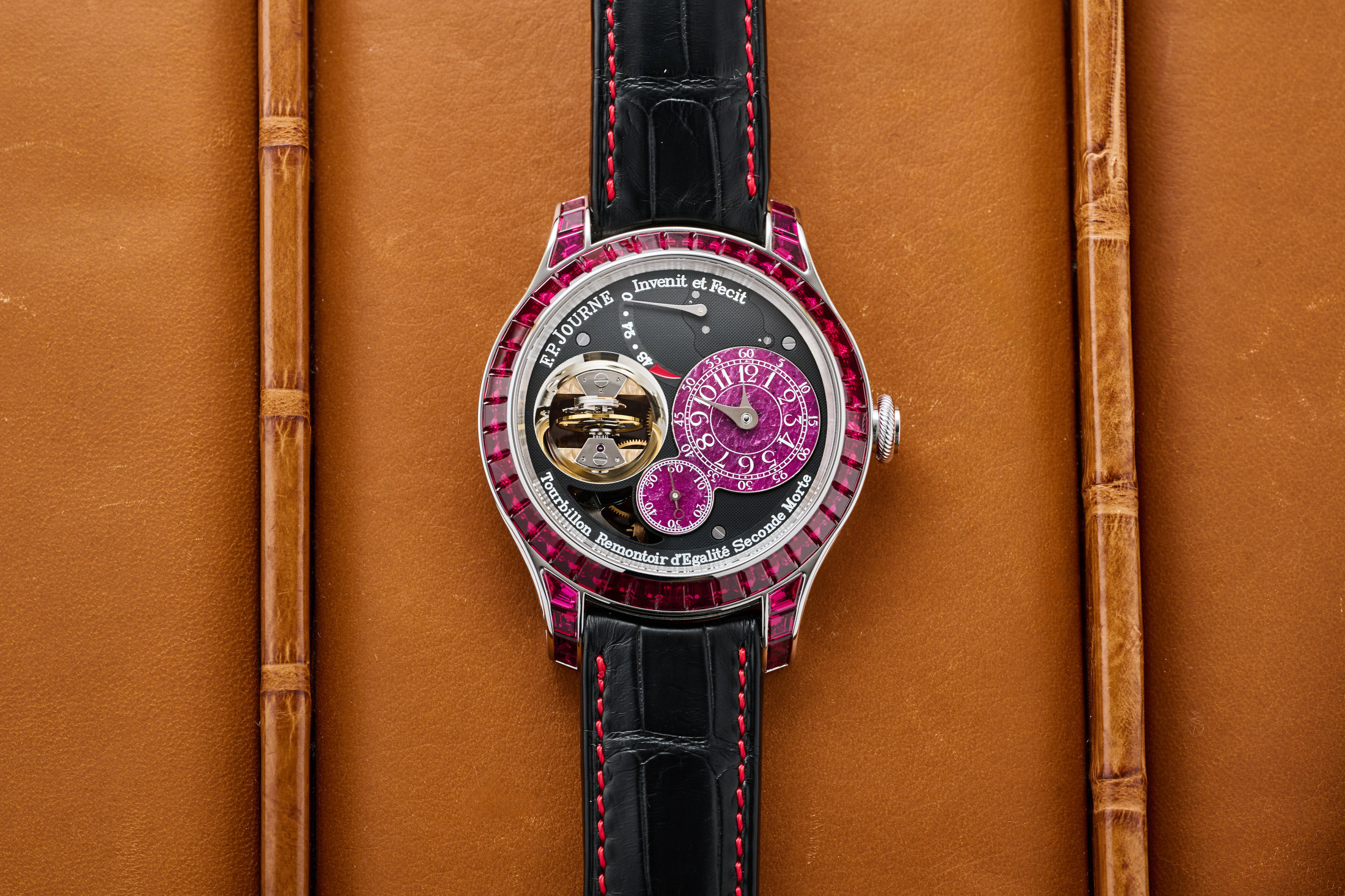
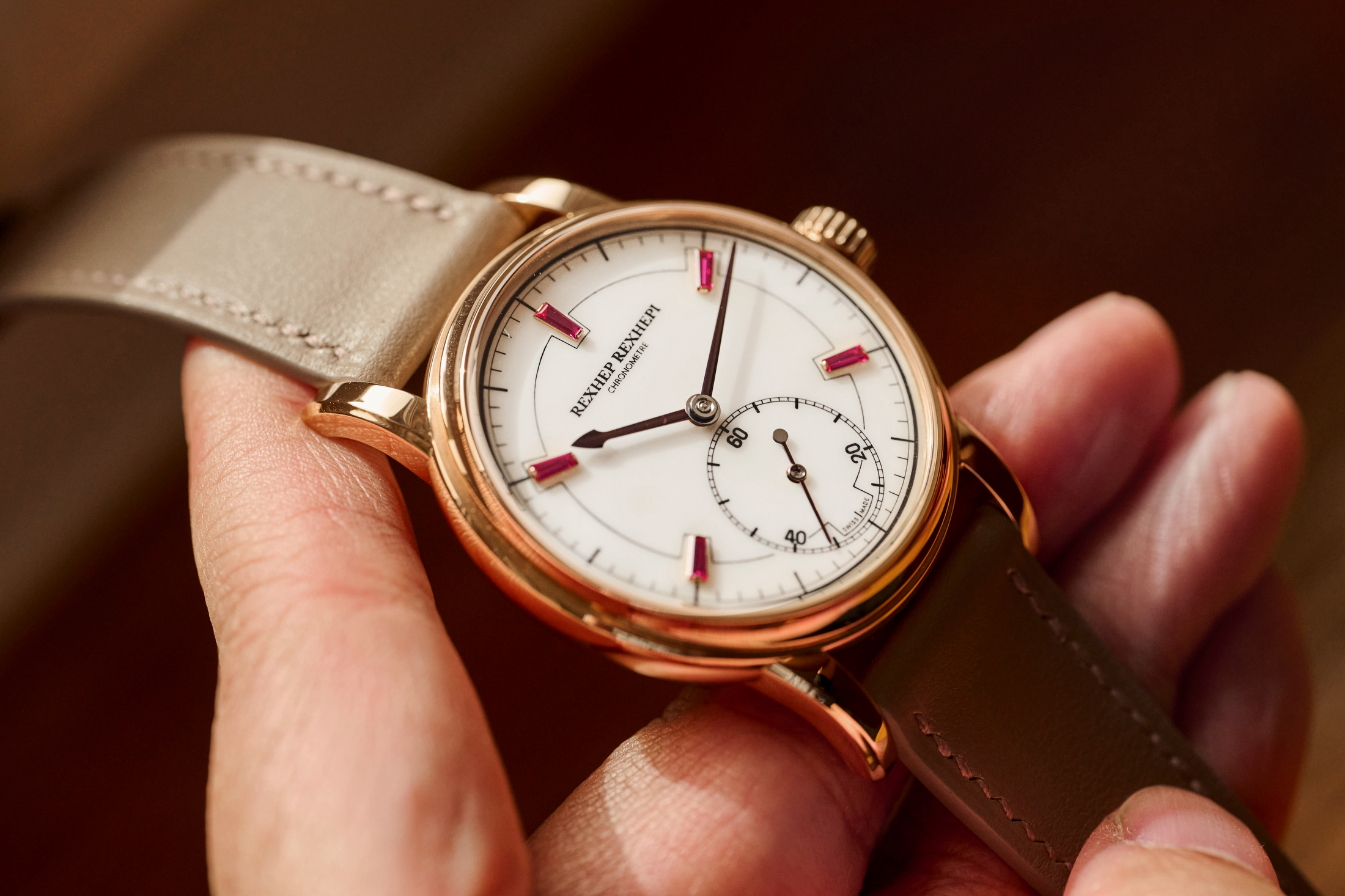
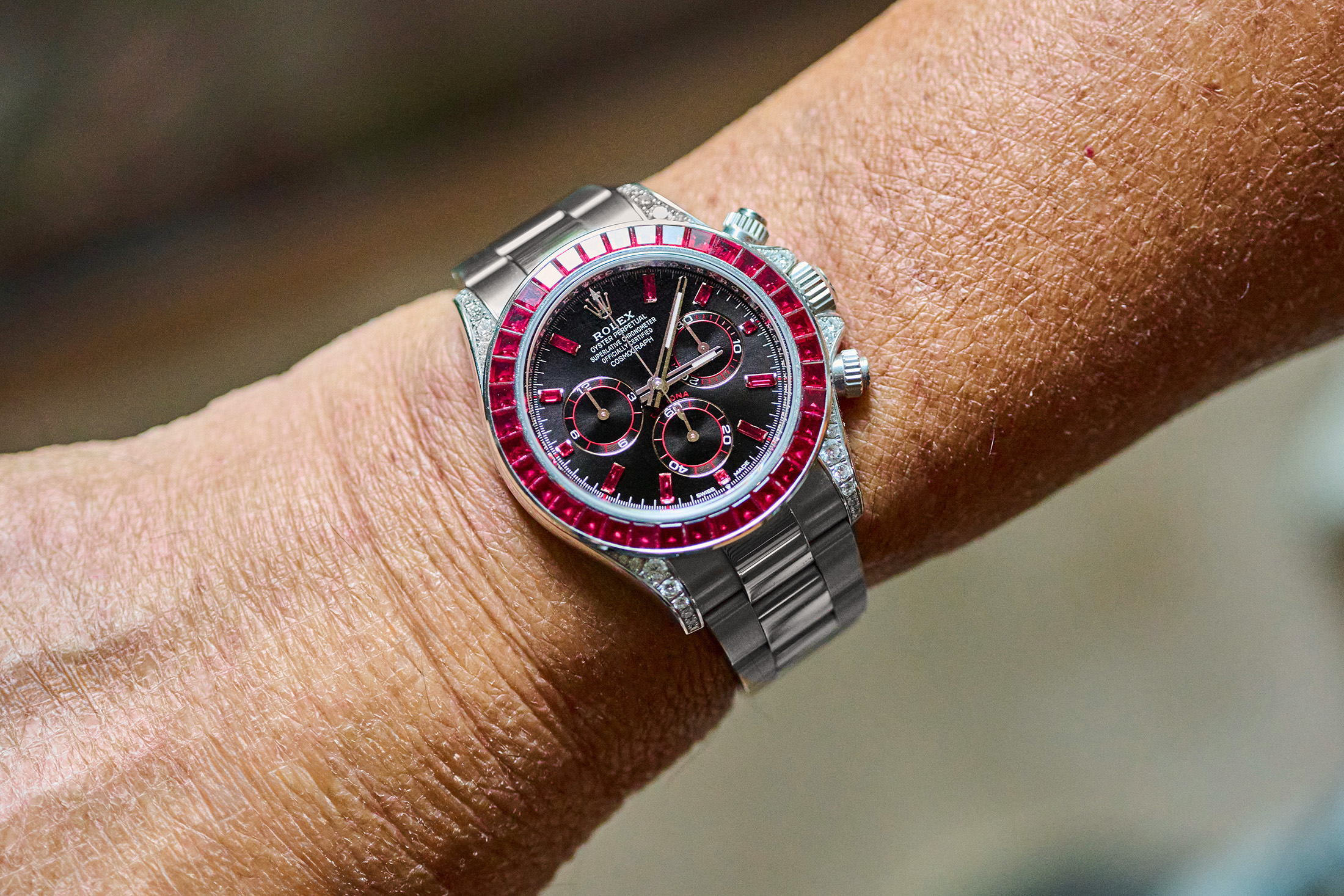
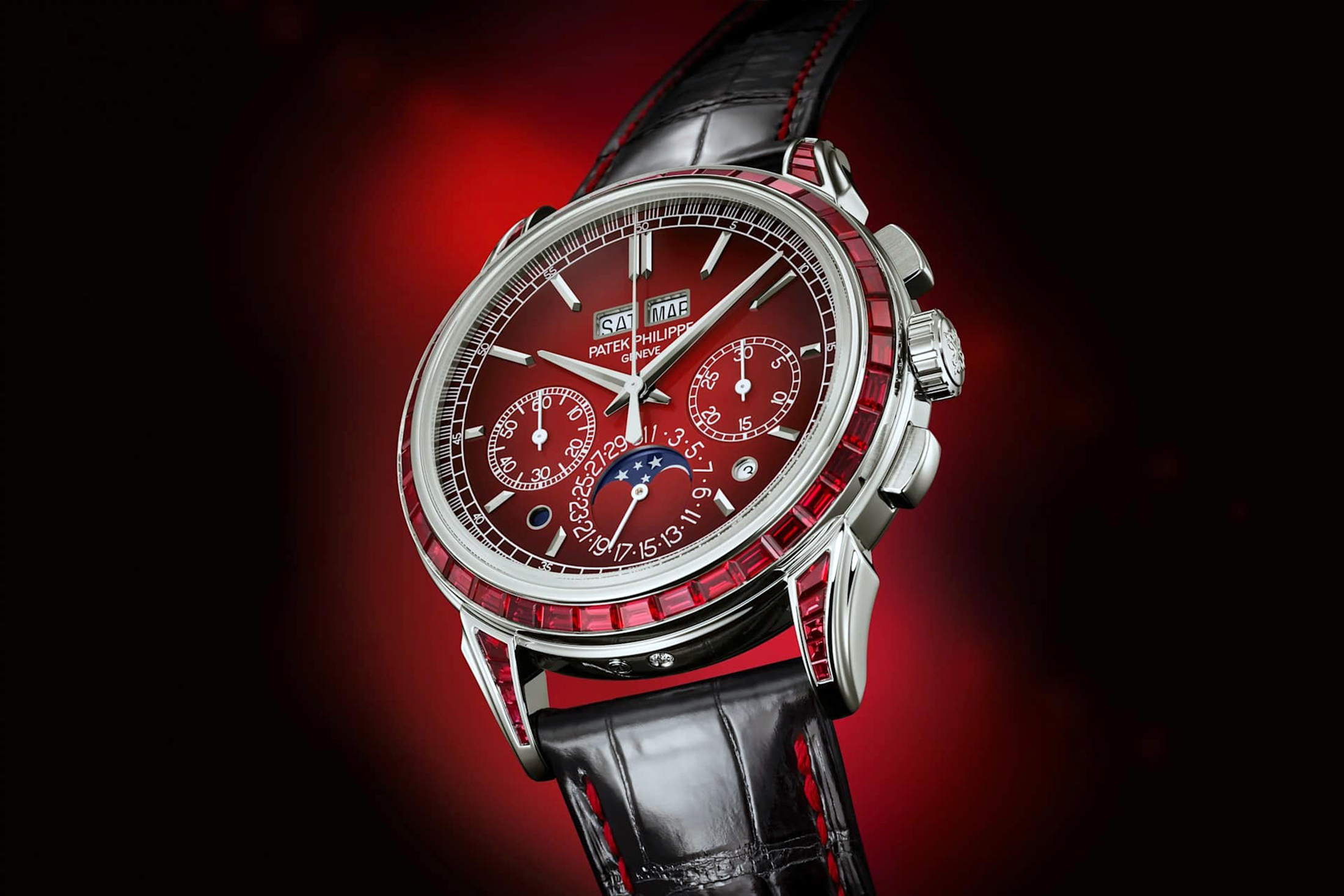

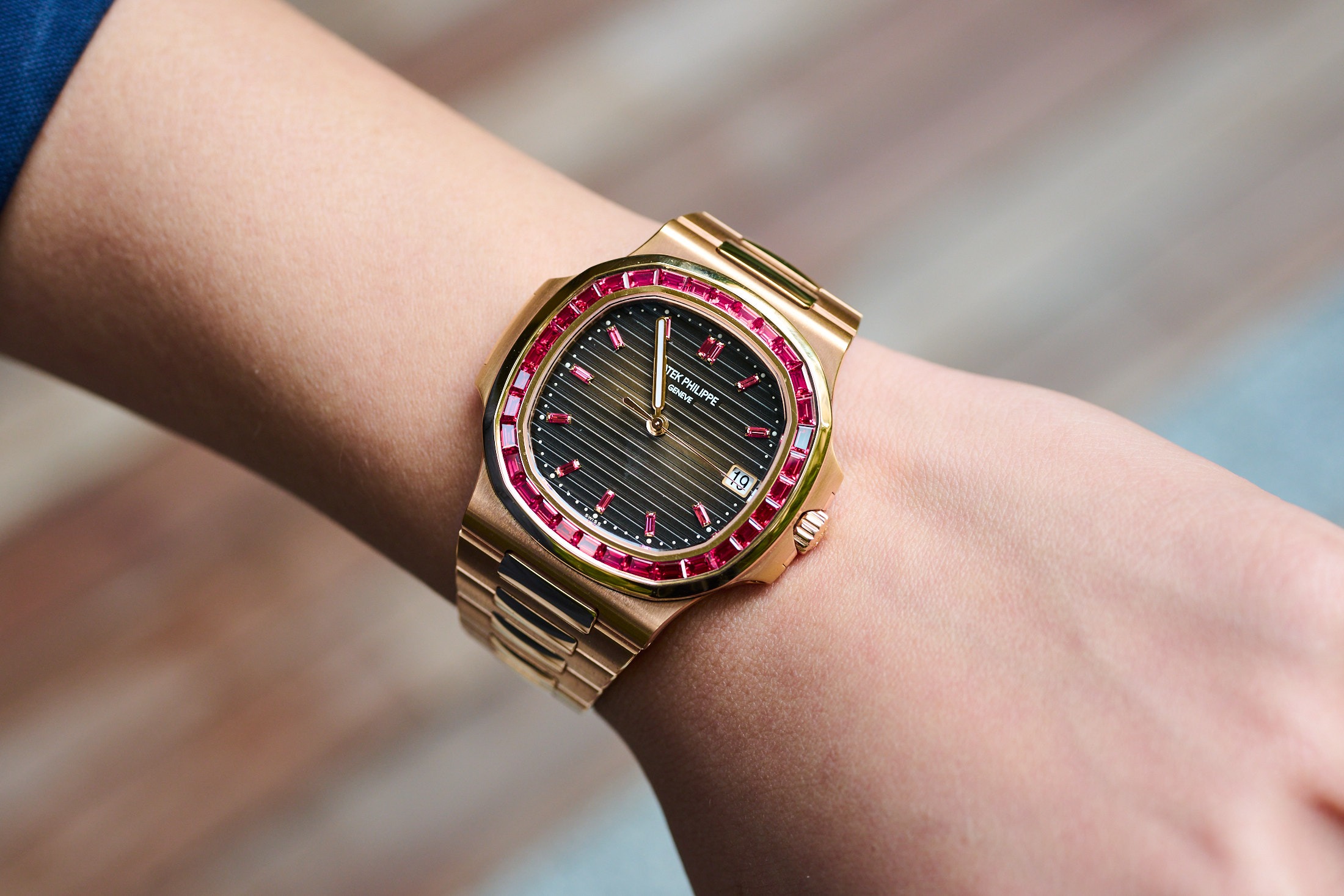
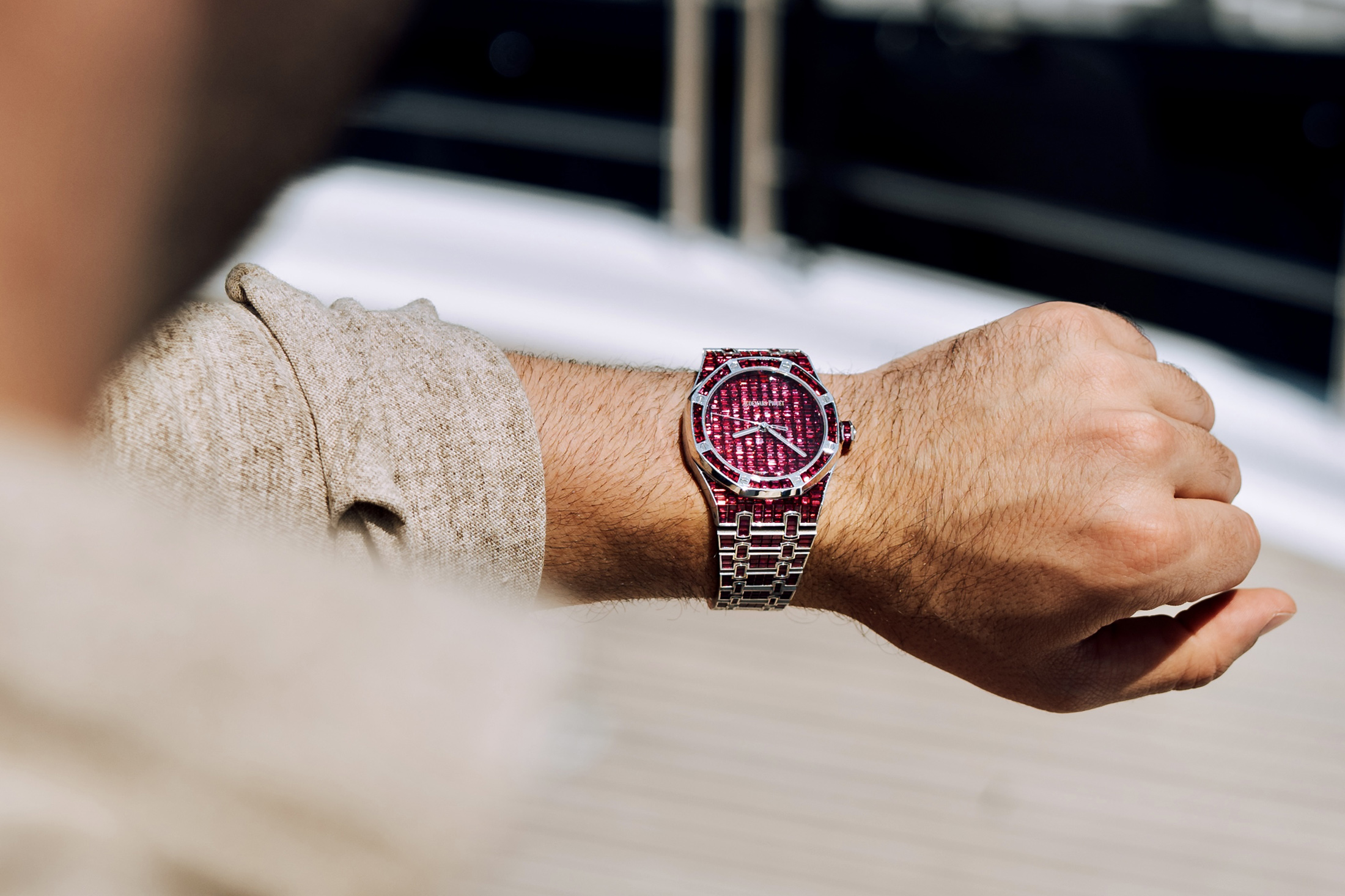


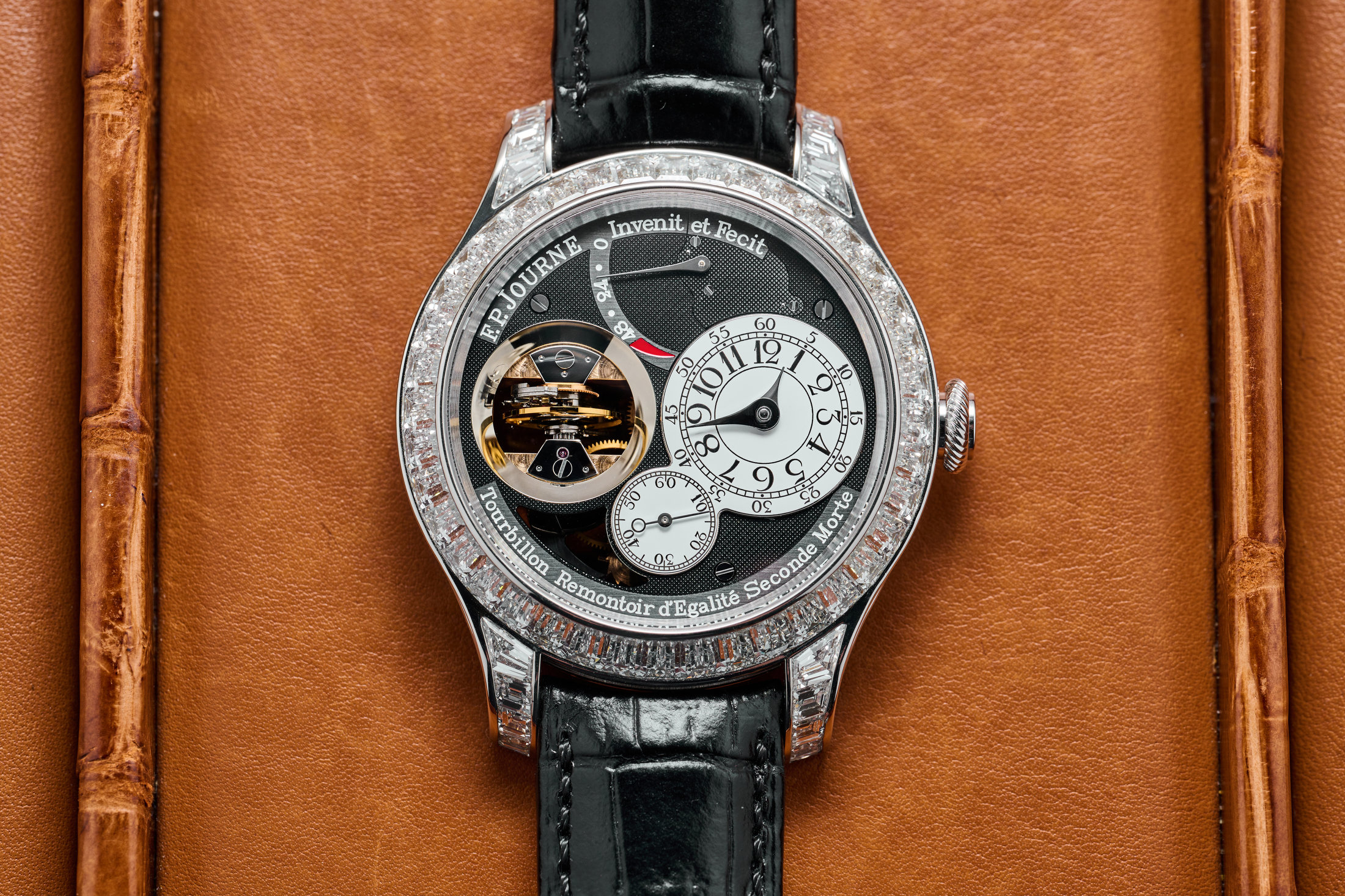
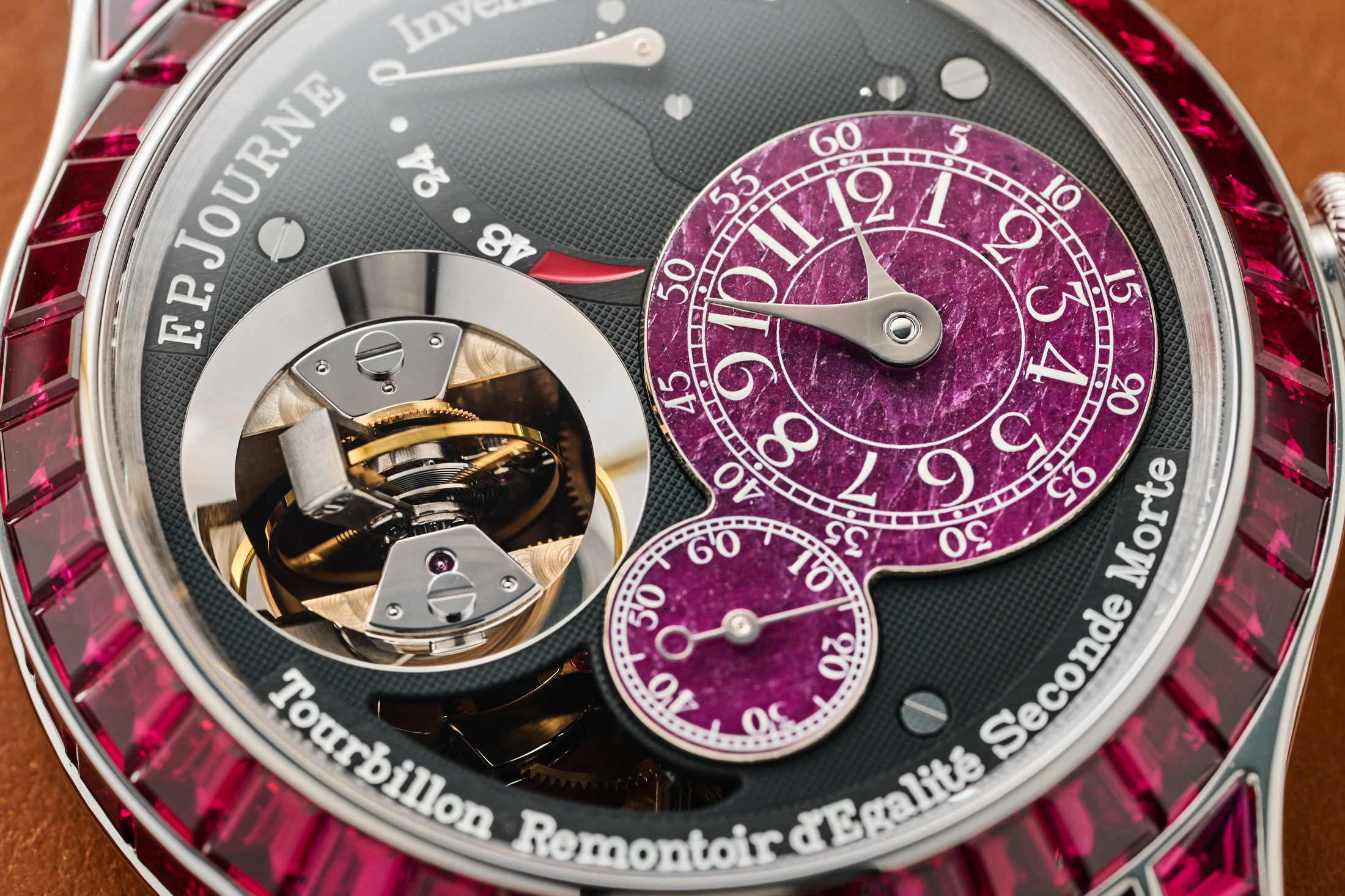
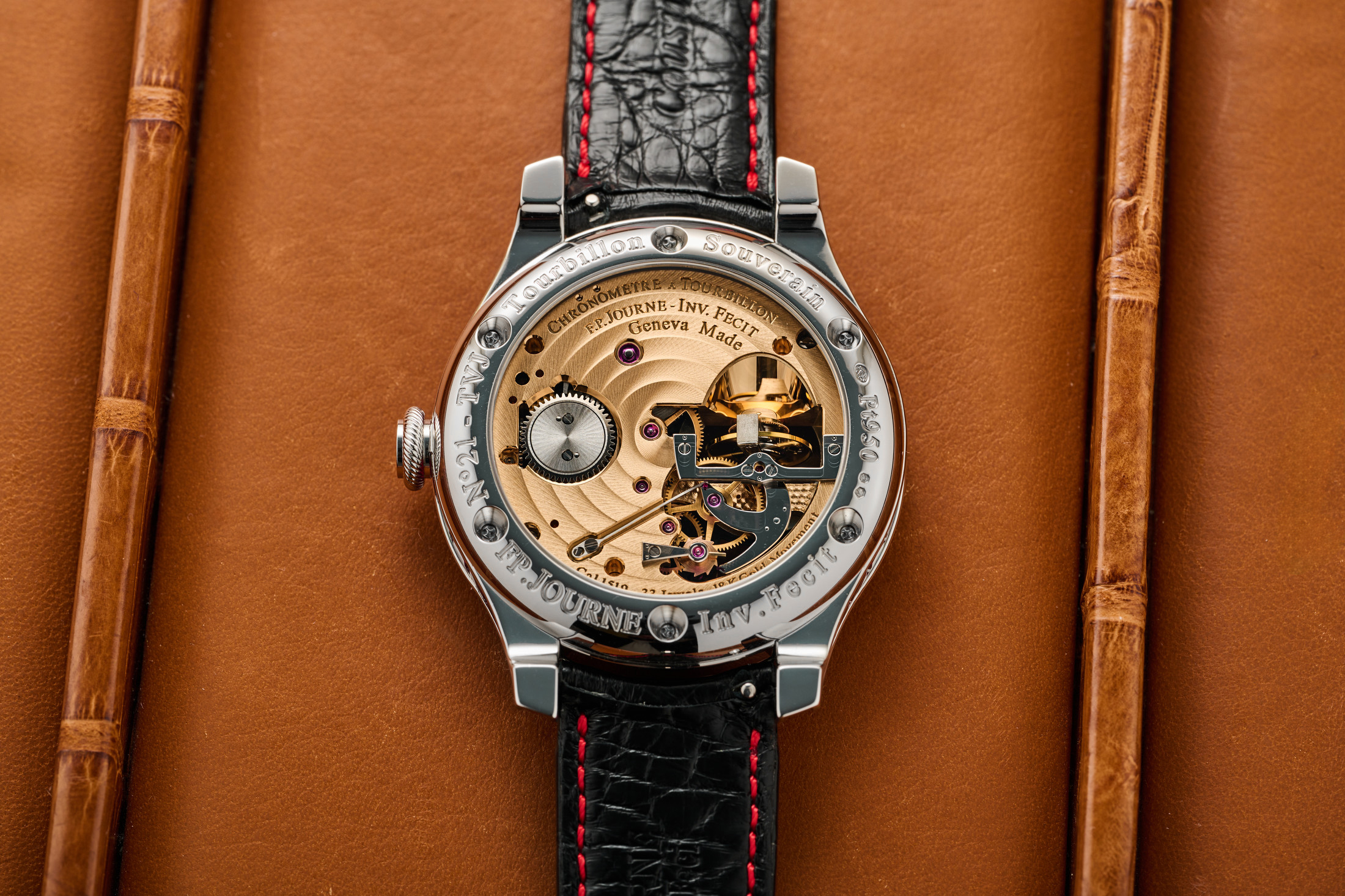
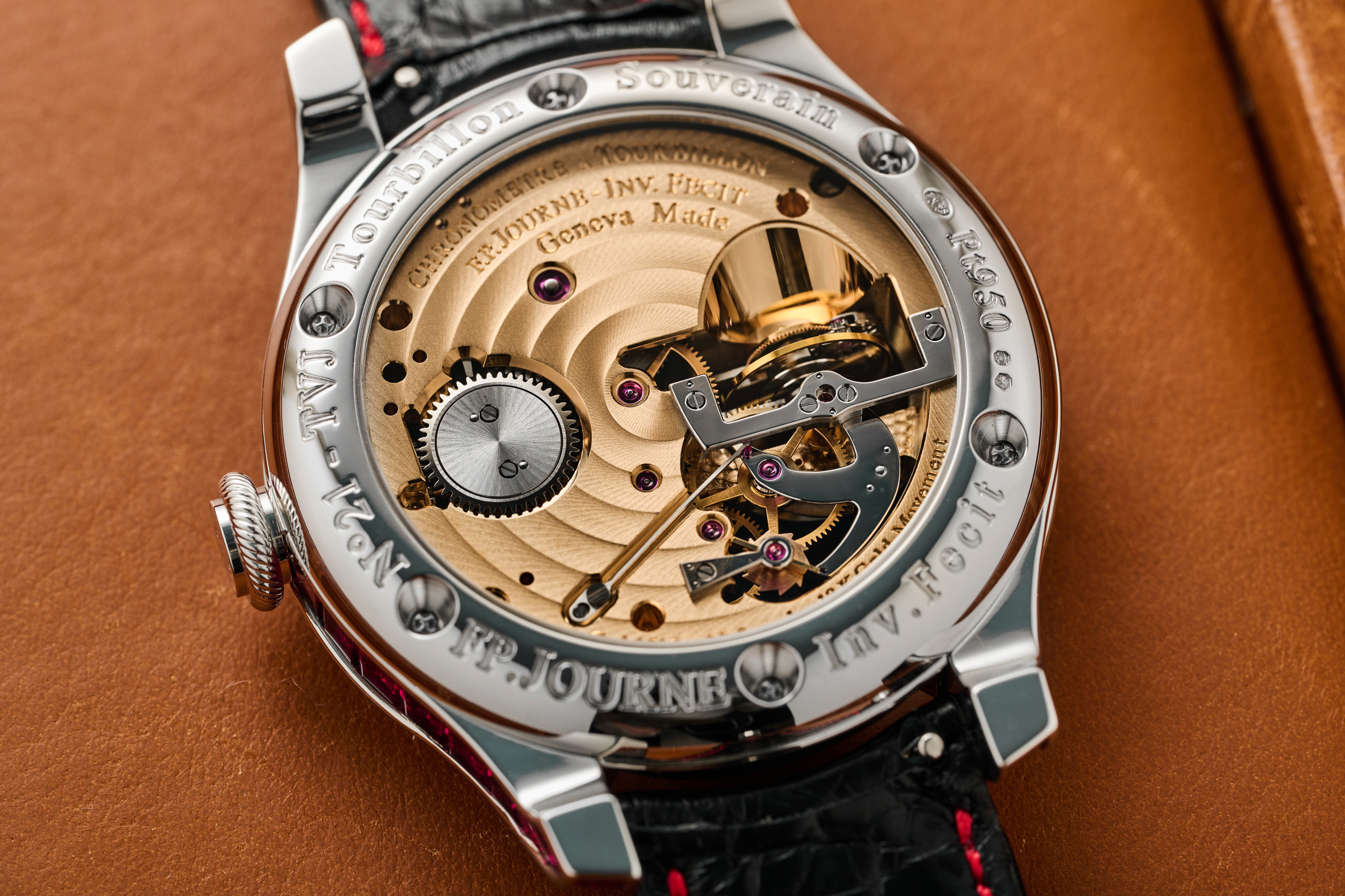
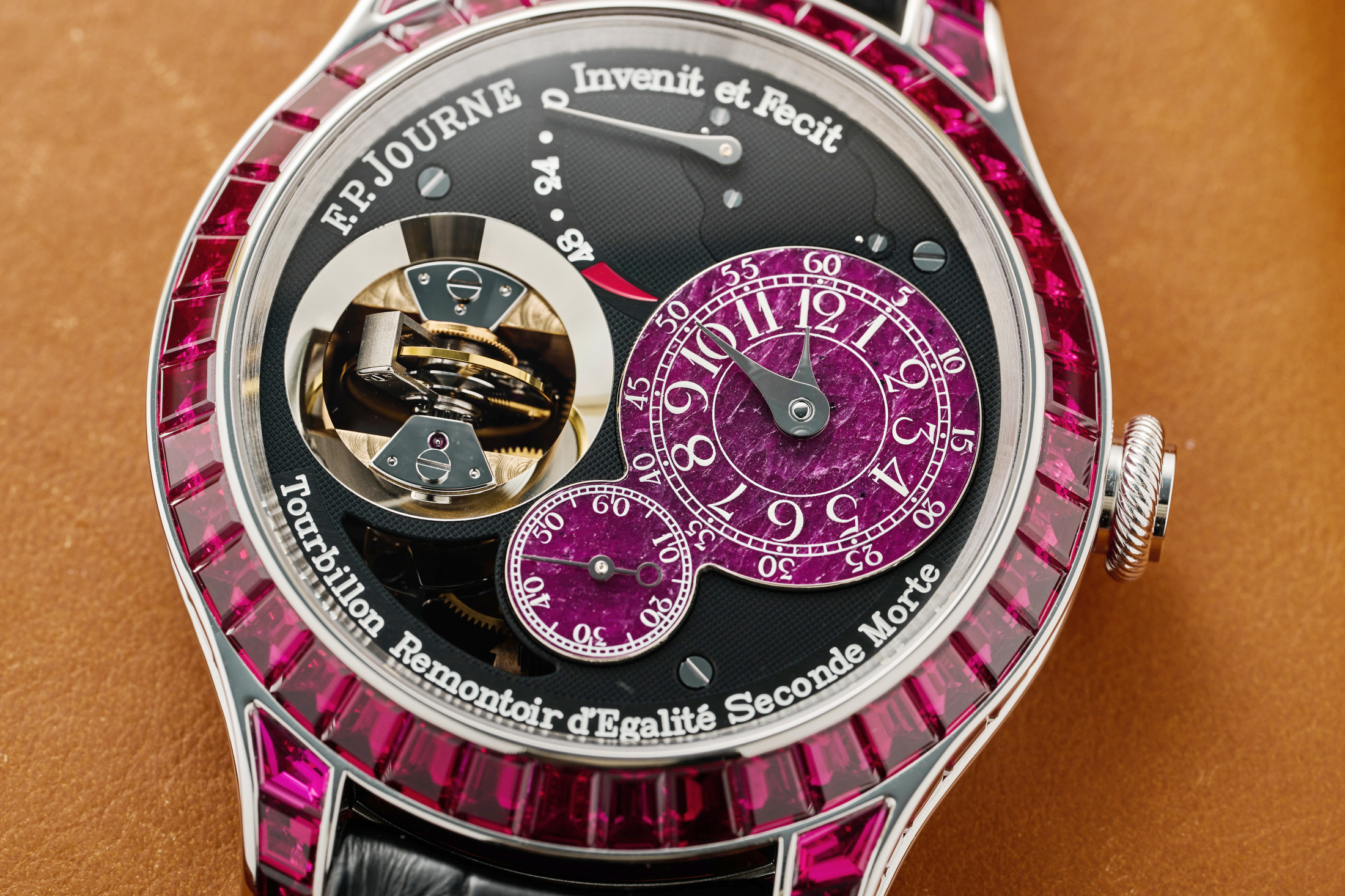
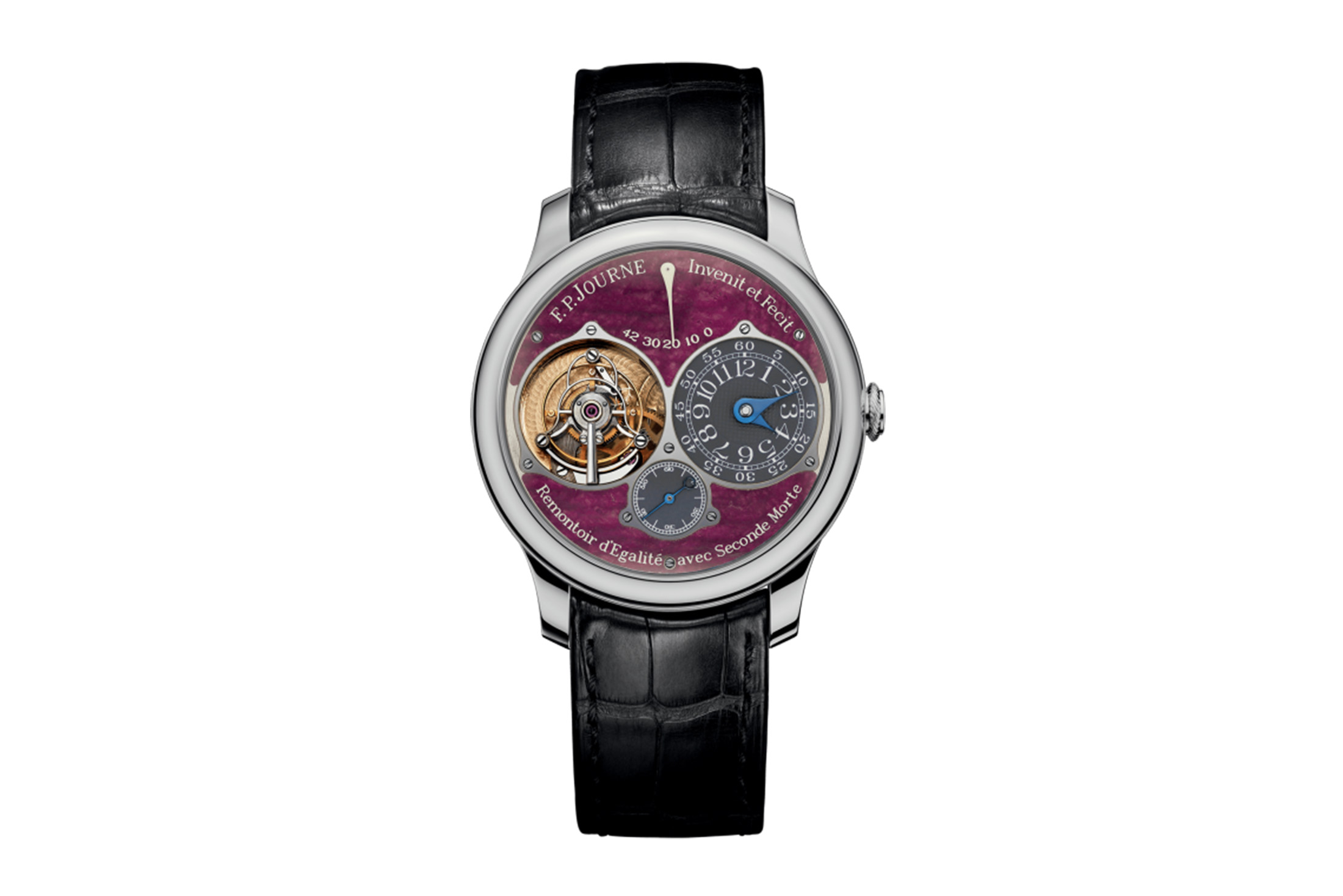
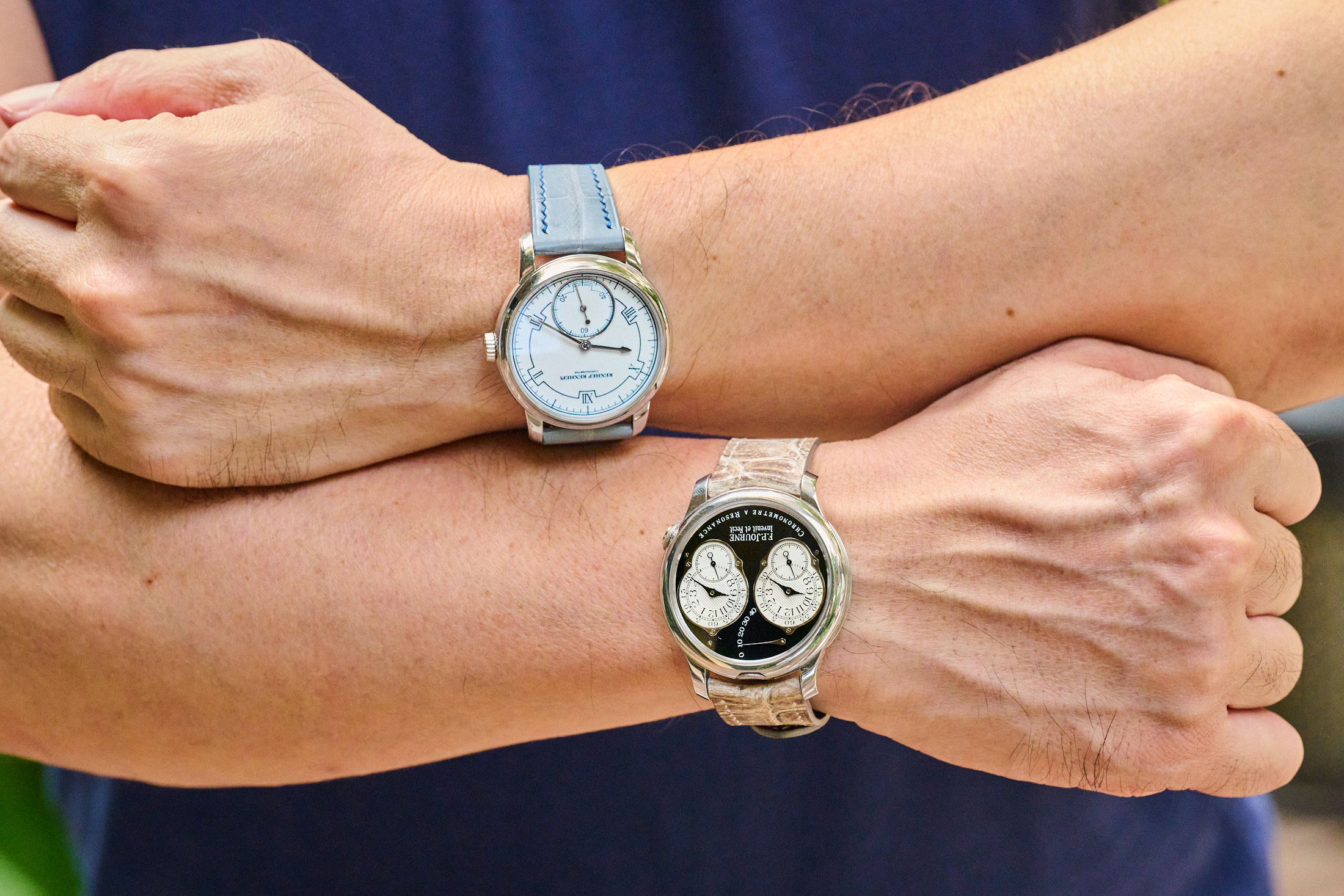
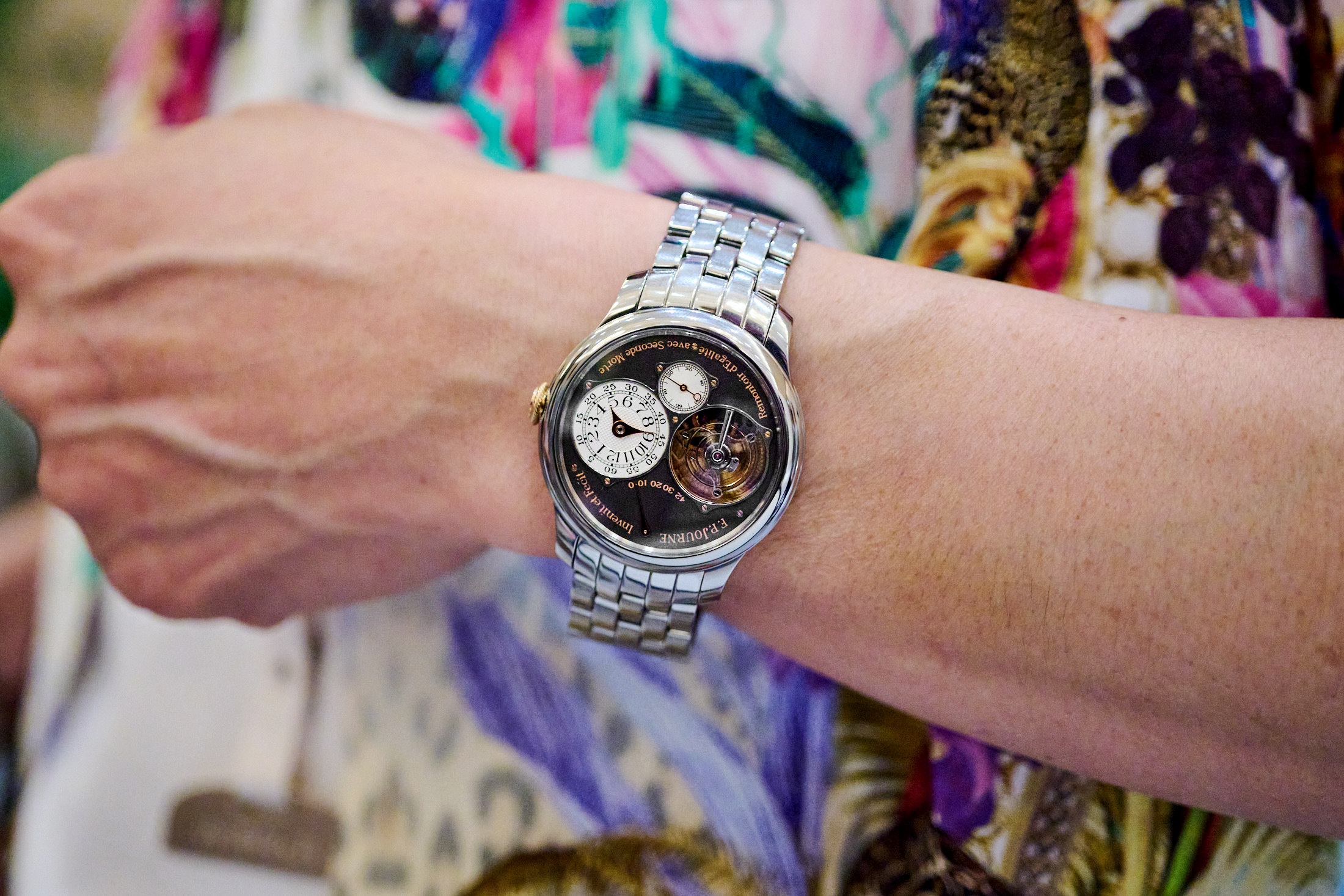
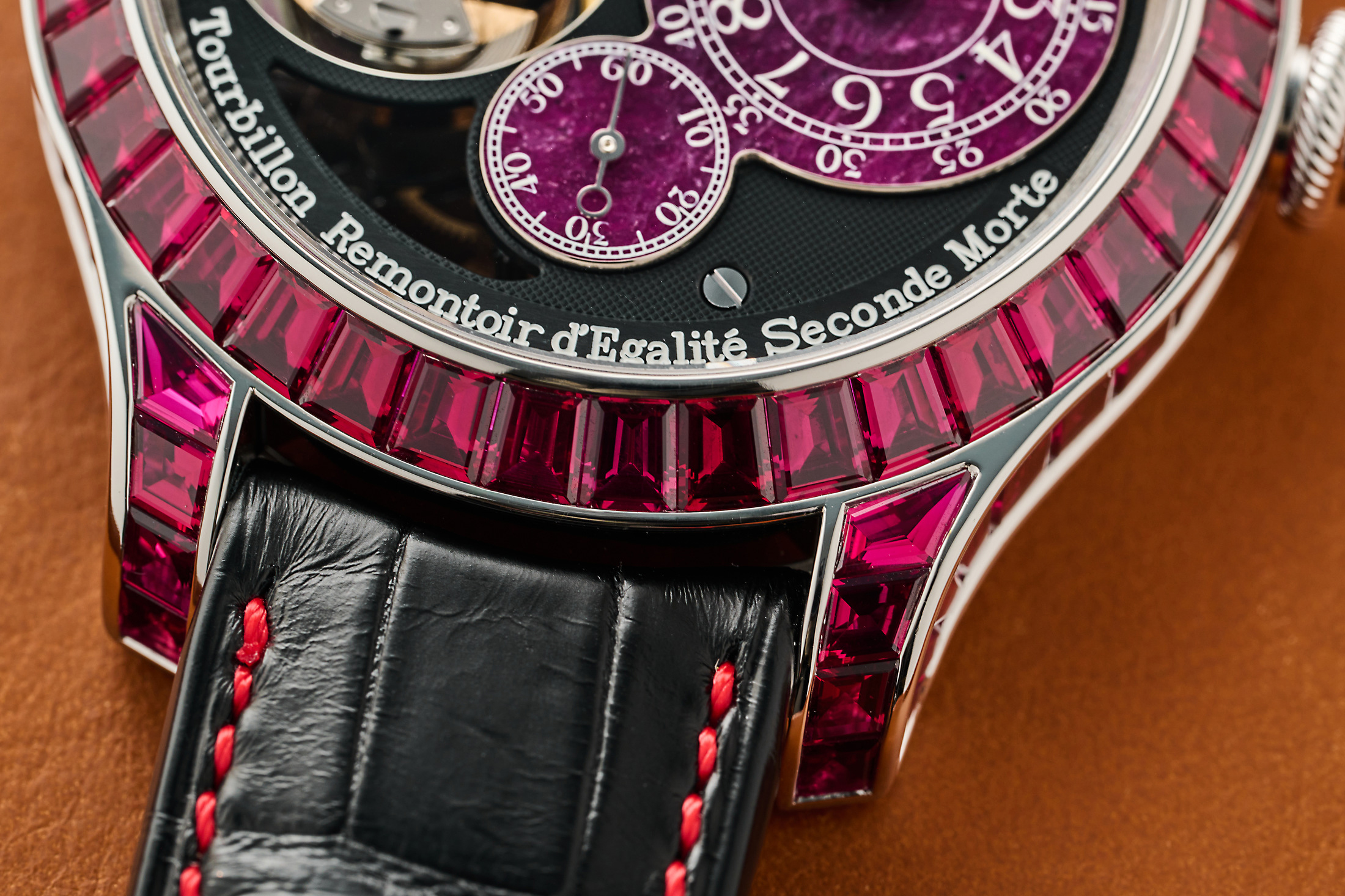
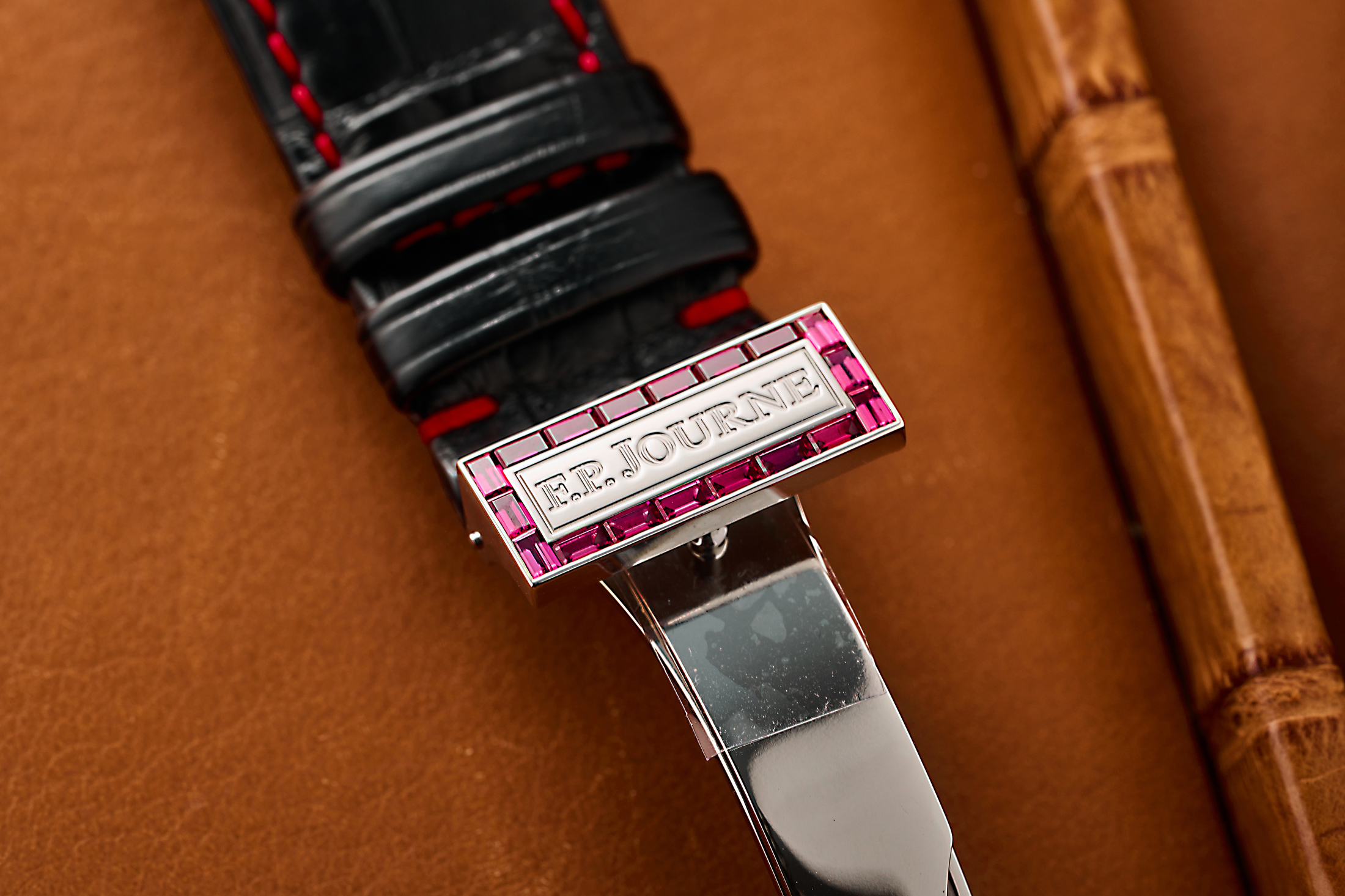
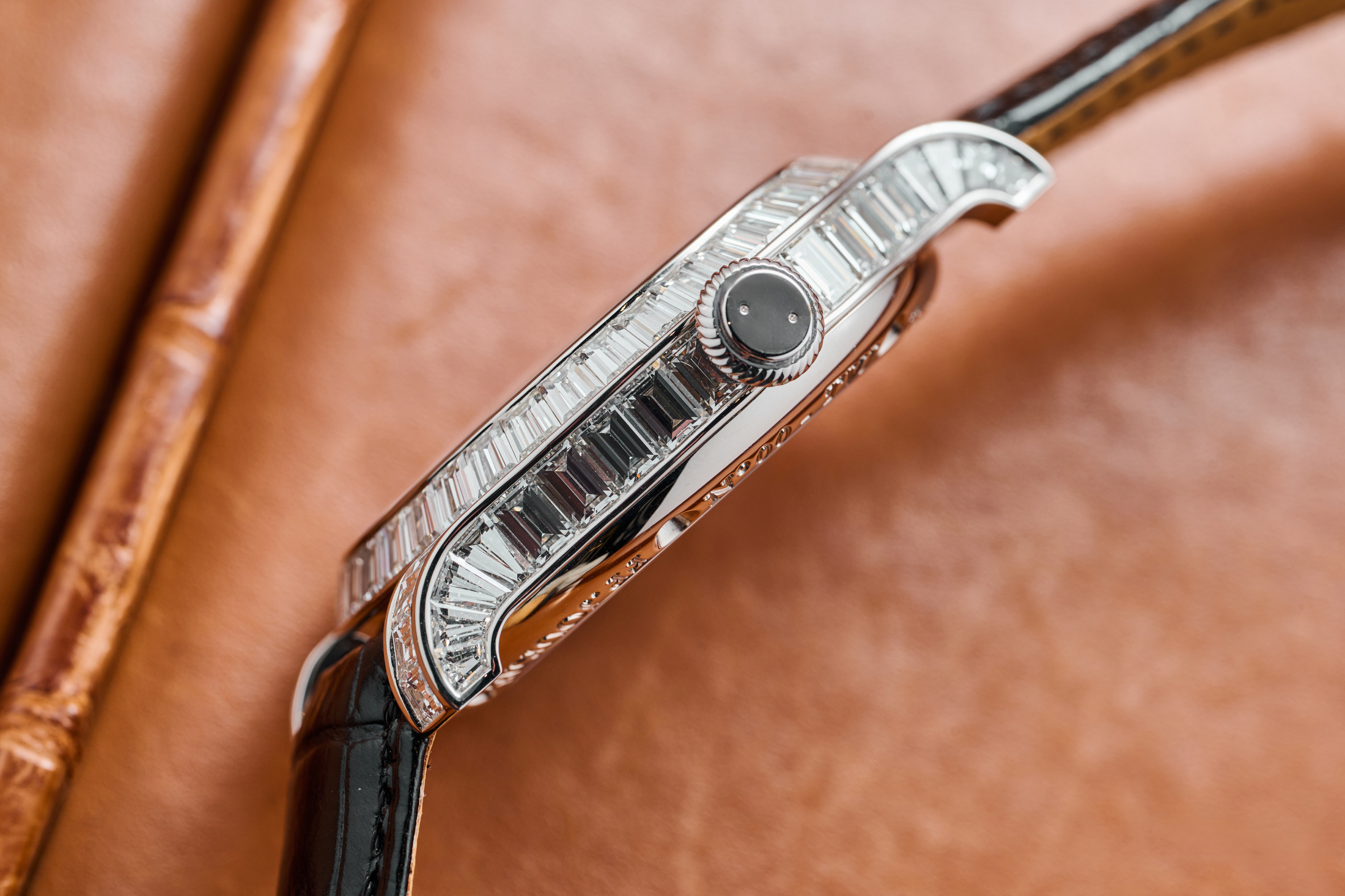
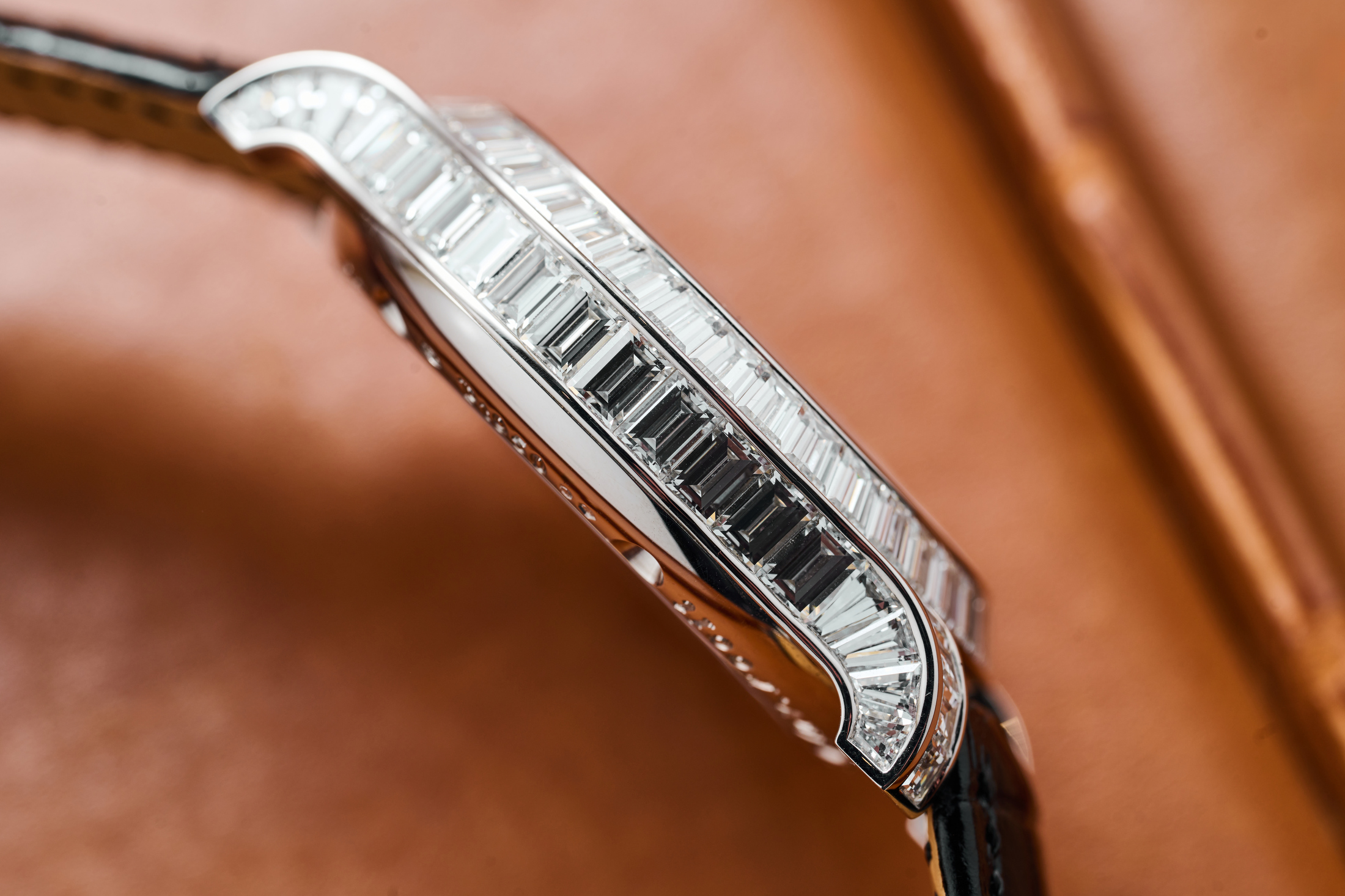
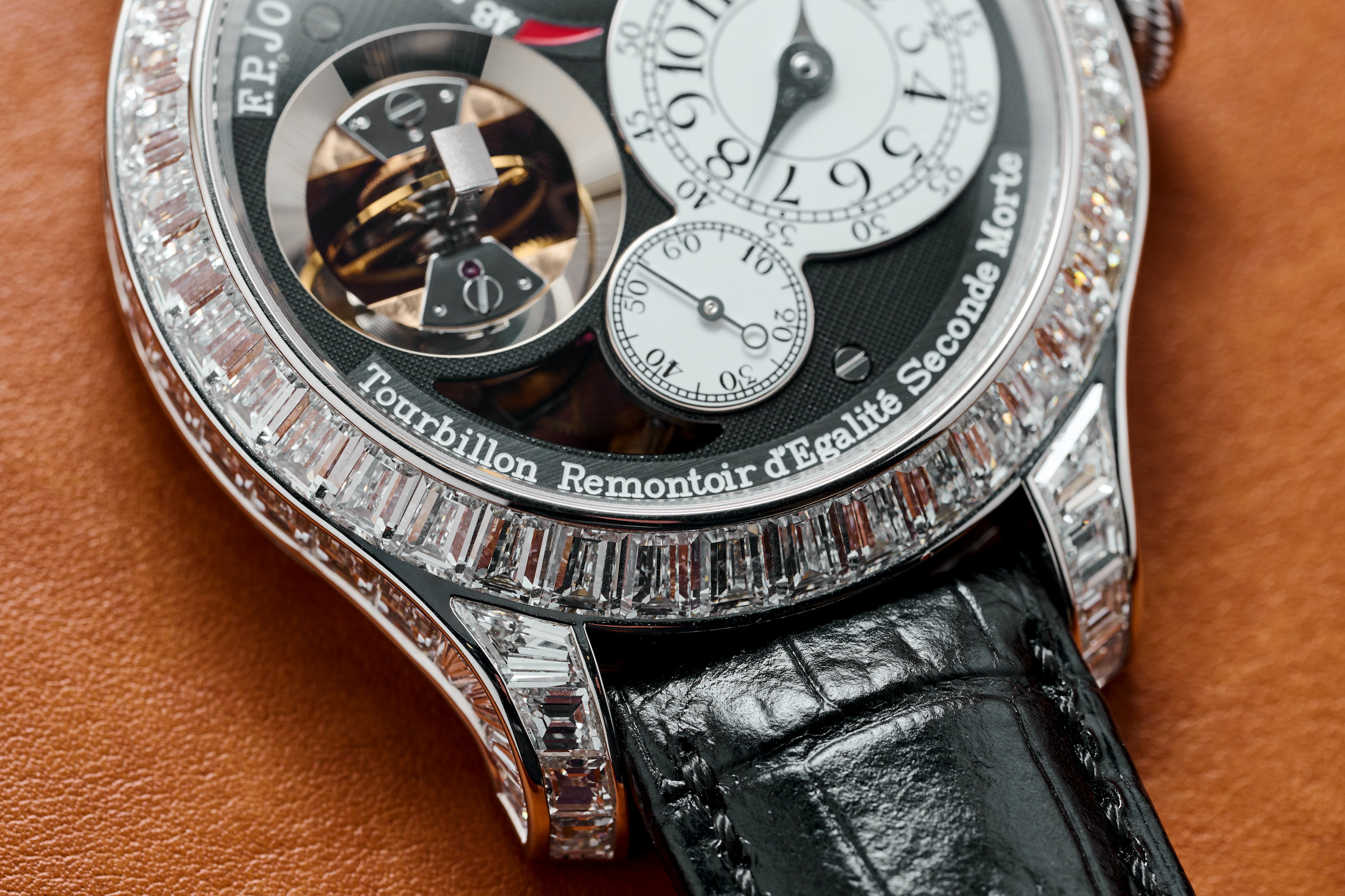
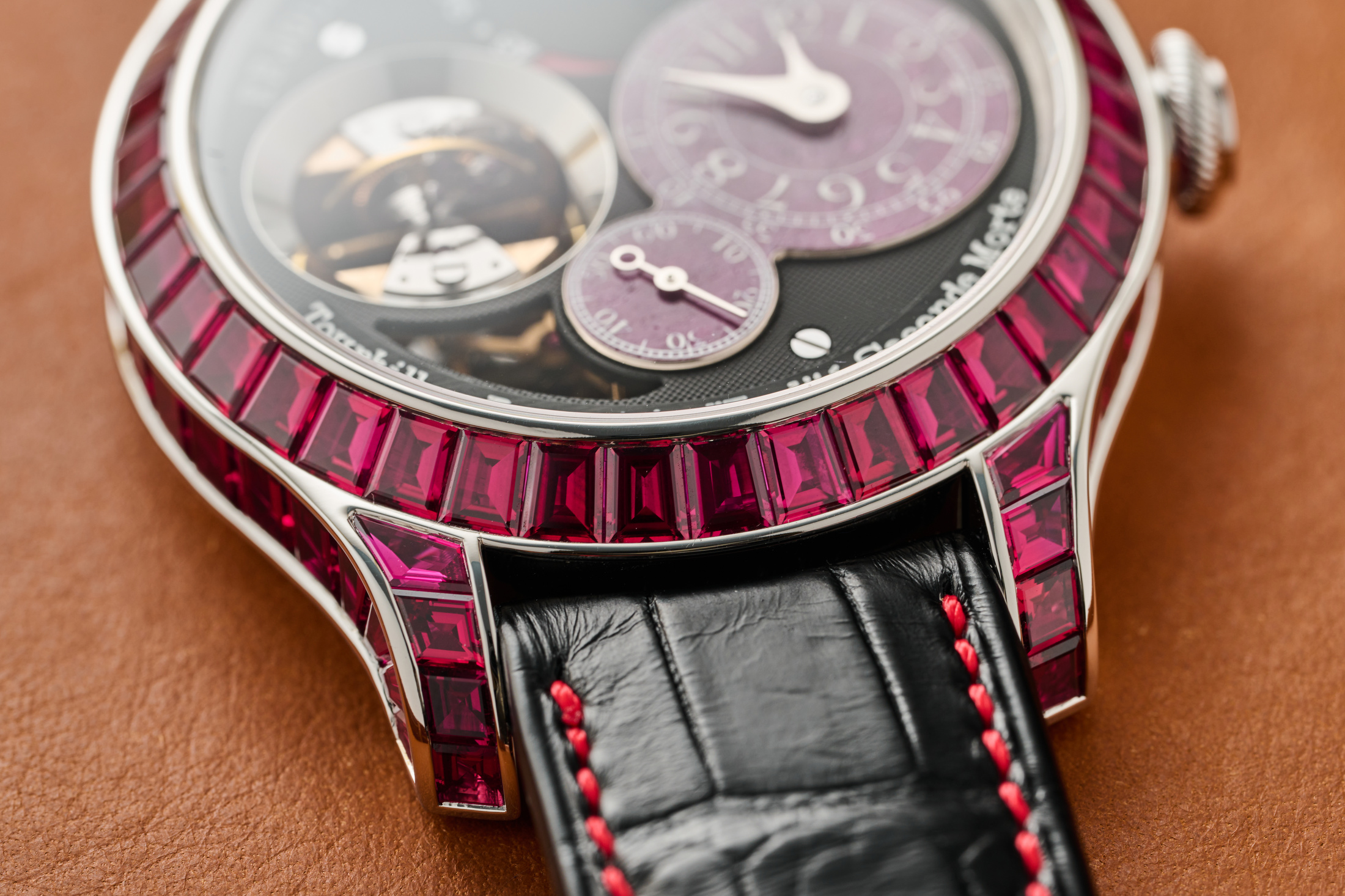








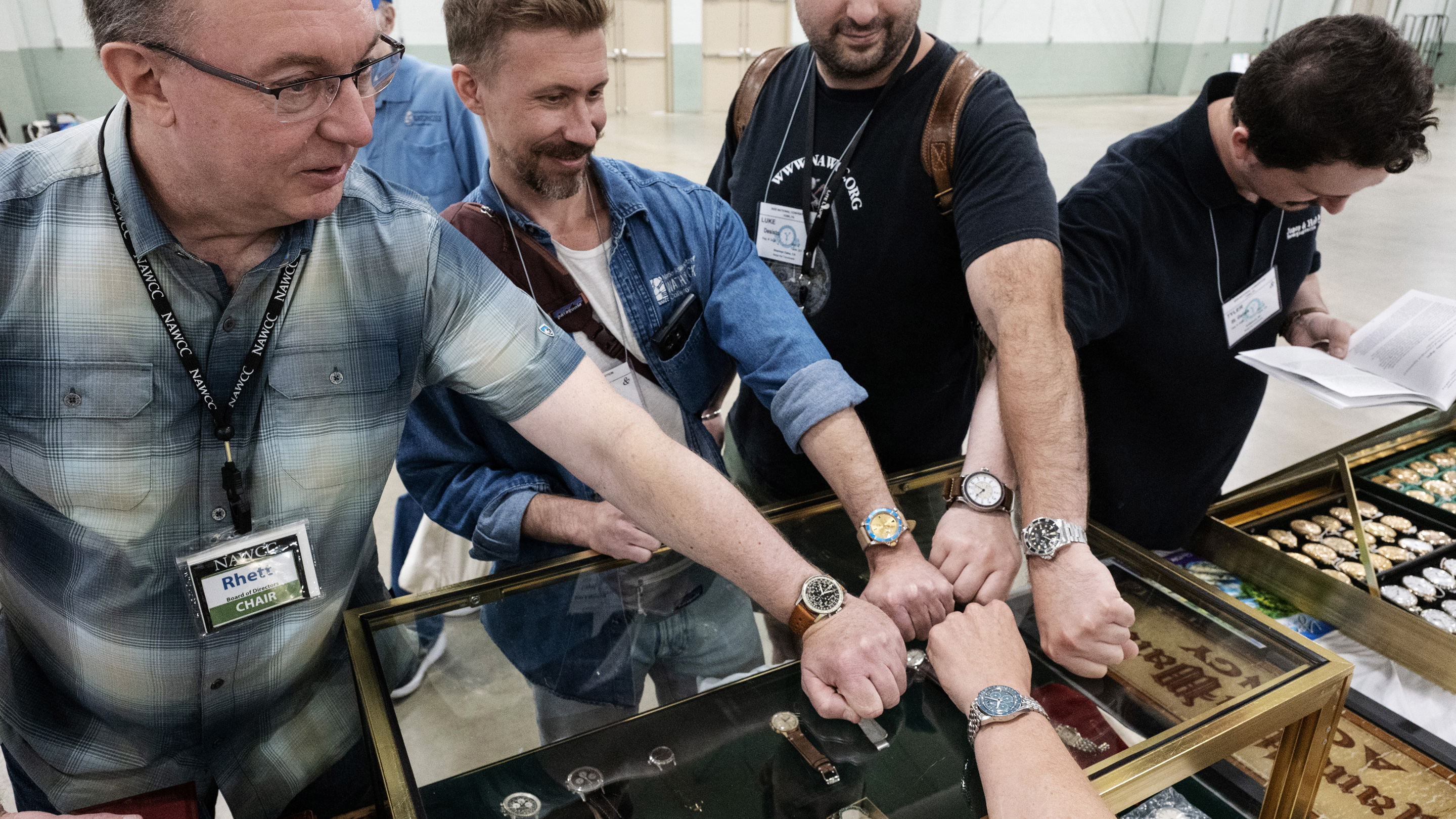
Top Discussions
Business NewsOnline Watch Dealer Bezel Is Rejecting More Than A Quarter Of The Watches It Inspects, Mostly Rolex
IntroducingA New France-Exclusive TAG Heuer Carrera Chronograph Limited Edition With A Vintage-Inspired Look
Hands-OnF.P. Journe's Tourbillon Souverain Vertical Joaillerie Rubis – The Largest Baguette-Cut Rubies Ever Used In Watchmaking